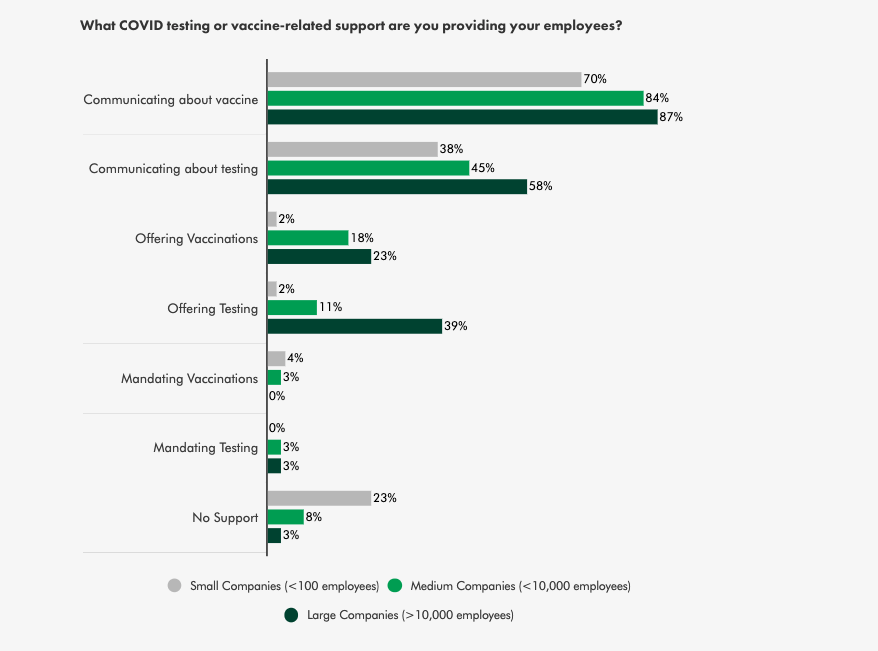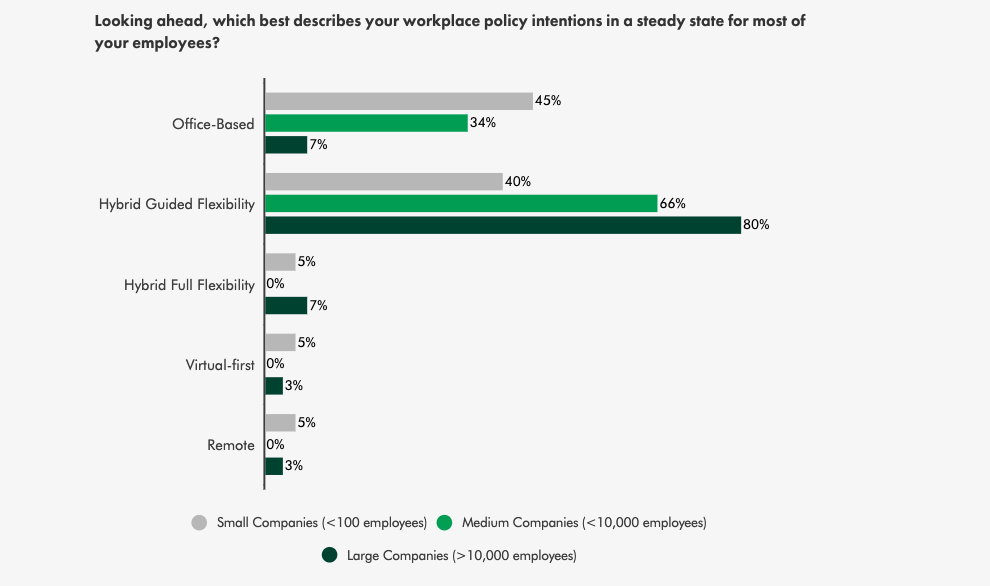How To Rethink Your Real Estate Portfolio For A Post-Pandemic World


Nikki Greenberg considers herself a professional problem solver.
As an architect, consultant, and founder of Real Estate of the Future, she helps clients all over the world embrace new strategies and proptech to generate more net operating income in their portfolios.
At a time when we’re all rethinking the way we use real estate and navigating the return to the office, new COVID-19 variants, and the hybrid workplace, we still have a lot to learn. The spread of COVID, the vaccine rollout, and the government response varies widely depending on geography. Nikki’s home, Sydney, Australia, initially went into a full lockdown for eight weeks when the pandemic first began in March 2020 and experienced what felt like a post-pandemic work life until very recently.
Globally, 71% of corporate real estate leaders believe a steady recovery is underway, according to a May CBRE survey, and another recent survey showed 87% of large companies believe offices will return to a more normal state of activity by October. However, some companies are delaying their return-to-office plans amid new concerns about the Delta variant and the CDC’s new recommendation that vaccinated Americans should wear masks indoors.
In a recent webinar, Nikki shared her insights on how corporate real estate leaders can move confidently in the right direction even when they don’t have all the answers. Here are a few key takeaways.
Managing a return to the office requires leading with empathy
As we’ve seen just recently, there are many variables corporate real estate leaders need to consider in their return to work policy and plans.
While most employees are eager to return, many have understandable concerns.
“Even when we hadn’t had COVID in our city for months and months, there was still this cautiousness from people and this reluctance to return to working in the office from a safety perspective,” Nikki said. “Not everybody can be vaccinated. And there are a lot of people, or a lot of people with somebody in their family that have compromised immune systems, and that does cover a significant part of the population. So even if somebody can go into the office, they might be coming home and worried about the health and wellbeing of their loved one because they’re susceptible to getting it. So there is this long tail, I think that’s one of the first lessons.”
Corporate real estate leaders and other workplace leaders need to acknowledge everyone has different needs and comfort levels when it comes to returning. Most are not planning to mandate vaccines or testing, but they are providing information about both to their workforce.

(Source: CBRE 2021 U.S. Occupier Sentiment Survey)
A hybrid workplace requires active management
Research shows most employees expect to return to a hybrid workplace instead of a traditional one. In the most recent CBRE survey, 80% of corporate real estate leaders at large companies described their new approach as “hybrid-guided flexibility”.
The same is true for 66% of mid-sized companies and 40% of companies with fewer than 100 employees.

(Source: CBRE 2021 U.S. Occupier Sentiment Survey)
However, the way many companies have introduced the hybrid workplace has implications for the future of real estate, Nikki said.
“Companies basically said to their employees, “You decide when you want to come into the office.’ And a lot of employees said, ‘Okay, I’ll come in part time, but I’m going to come in on Tuesday, Wednesday, Thursday, which means that the city, even to this day, is completely dead on a Monday and Friday, which to me is ludicrous because now you’re having office spaces that are used less than half of the week. And it’s also only used during set hours. This huge redundancy and huge vacancy for offices on certain days of the week, but also after hours, I actually don’t think needs to exist if we just have a little bit of a rethink.”
While there’s no one-size-fits-all approach, workplace leaders can help by setting guardrails that offer employees more flexibility without sacrificing collaboration. Employees don’t necessarily need to be in the office from 9 to 5 every day, but they do have to be available at certain times to meet with their team members.
Corporate real estate leaders also need to think about how to improve space utilization.
One of Nikki’s latest initiatives focuses on finding better uses for vacant spaces.
“I don’t think that a space should ever be vacant,” she said. “It should always be vibrant. There are a lot of very smart providers that already do that, using vacant parking lots for markets (or) having combined uses where you can have a yoga studio and bike repair. An office…not being utilized…why don’t we put it to use? Maybe it can be a call center that’s talking to Australia. Maybe it can be a gaming center. There’s so many possibilities, which I’m crazy excited about.”
Companies need to rethink office design for new ways of working
The disruption we’ve all experienced has given us a new opportunity to design offices not for today, but for tomorrow, Nikki said.
That means thinking about who will use the office and what they want. By 2030, Gen Z and Millennials will be 75% of the workforce, she said, but the C-suite is still dominated by people who are accustomed to more traditional ways of working.
“If you do have that kind of fixed thinking about wanting to return to normal, understand that in the war for talent, you’re not necessarily going to be able to attract your Millennials, (who) value experiences and lifestyle over cash.”
Rethinking office design starts by taking a step back and questioning the purpose of every space, she said.
“We actually need to take a step back and say, ‘What do we need to do in this office? How can you make your office preferable to working from anywhere else?” she said. “And if you can solve that…then the office will serve its purpose instead of just being a place that has desks and a coffee machine.”
Reimagine your corporate real estate today
Corporate real estate leaders and other workplace leaders have so much to consider when designing office space for the future.
First, they need to create spaces employees feel safe returning to even as new variations of COVID-19 emerge. That means screening visitors, ensuring appropriate distance between workspaces, and updating cleaning and sanitization protocols.
They also need to plan for a more flexible future, where employees will divide their time between home and the office. That means moving away from assigned seats and making rooms and workspaces reservable. It means making it easy for employees to find their colleagues and find places that best support the work they’re doing.
And it means keeping them connected to the information and services they need to be productive.
iOFFICE provides global companies with the technology and strategies they need to rethink their real estate for new ways of working.
That includes giving them full visibility into how employees use every building, floor and desk and making it easy to manage moves, redesigns, and more to adapt to changes.
It also means implementing return-to-work solutions that support safer environments.
Take the first step toward reimagining your real estate portfolio today by learning more about our solutions.
